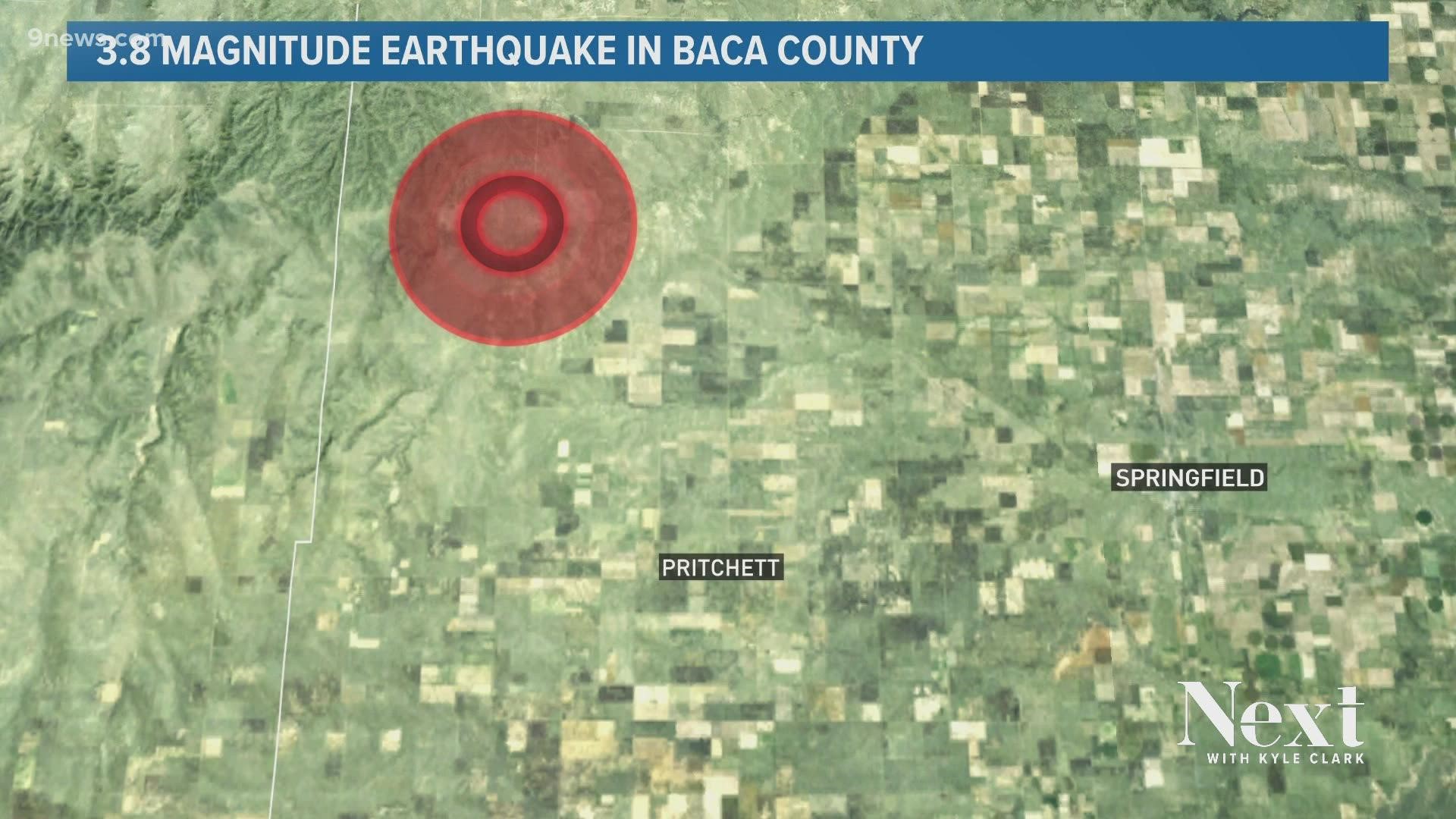PRITCHETT, Colo. — Seismologists are calling an earthquake in southeast Colorado on Monday morning a mystery.
The magnitude 3.8 earthquake was detected at 3:27 a.m. about five miles northwest of Pritchett in Baca County.
It was a relatively strong earthquake for our state. Over the last 20 years, only 10 quakes have been stronger.
And the location was very unusual. There have only been seven earthquakes recorded in that part of the state since 1989.
“I would definitely just put this one in the currently mysterious category,” said Kyren Bogolub, a seismologist with the Colorado Geological Survey.
She said there are no known fault lines in Baca County that could have triggered the earthquake.
“Just because we don’t know about a fault being there, doesn’t mean that there isn’t one," she said. "In fact, earthquakes are often a good way that we find faults.”
Bogolub said there may not have been enough earthquake activity in southeast Colorado at this point to try to identify or investigate a new fault, but it is one of the tools they use to better understand the geology of Colorado.
It is possible that Monday's earthquake could have been what seismologists call a "human-induced" earthquake. Those are mainly caused when wastewater from oil and gas operations gets injected back into the earth.
They can also be caused by hydraulic fracturing, also known as fracking. Bogolub said that process uses liquid to break through layers of rock in order to remove gas from sealed pockets. The pressure from that water injection is strong enough to cause earthquakes. Fracking also produces wastewater that is injected back into the ground.
"Usually human-induced earthquakes are not caused by the initial fracking process," Bogolub said. "More than 90% of them are caused by the wastewater disposal, which can come from fracking or traditional oil and gas operations."
In this case, Bogolub said the quake was likely not human-induced.
She said Baca County is in between two areas well known for human-induced earthquakes. The Raton Basin near Trinidad is one of the most active earthquake zones in the state of Colorado, and the state of Oklahoma has reported many human-induced earthquakes in recent years.
But Baca County doesn't have as many oil and gas operations as its neighbors, according to Bogolub. And that area does not have a history of earthquakes of any form.
Another theory could be plate tectonics. That’s when large sections of the Earth move. Bogolub said the plate that Colorado sits on is not near any other plate boundaries, which cause the bigger earthquakes, but there is a section of our plate that is rifting.
“So that means that that plate is actually kind of tearing apart," she said. "I always tell people if you get some property in the San Luis Valley, it might be a good investment because in 10,000 years it could be beachfront.”
Baca County is more than 100 miles from the San Luis Valley, but Bogolub said it is possible the rifting is causing what she calls intraplate earthquakes.
She said there has been recent volcanic activity in New Mexico that could also be explained by intraplate tectonics, and those could be affecting a larger area than scientists are currently aware of.
“These types of earthquakes are not particularly well understood,” she said.
Some shaking was reported in Pritchett and Springfield. Bogolub said a 3.8 magnitude quake can cause minor damage to buildings and can cause loose objects to fall off shelves, but so far no damage has been reported from Monday morning's quake.
SUGGESTED VIDEOS: Science & Weather

